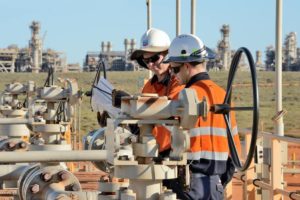Amp Energy says it has secured a three-month extension to an agreement underpinning the 5GW Cape Hardy Green Hydrogen project in South Australia, buying time to keep the potentially massive project ticking along.
Canadian renewables developer Amp was last year tapped to lead development of the huge green hydrogen and ammonia production project proposed for the Cape Hardy Port Precinct by SA-based miner, Iron Road.
Amp’s winning concept design, selected by Iron Road following a three-month competitive process, proposes an electrolyser and associated green hydrogen facility that will deliver over 5 million tonnes a year of green ammonia.
The project would be developed in two stages, with the initial phase comprising 5GW of renewable powered electrolyser capacity. The project’s second stage would see a doubling of this capacity to 10GW.
Amp said on Friday that the extension to the strategic framework agreement with Iron Road would allow time to finalise and execute transaction documents for the next phase of the project.
News of the extension for the Cape Hardy project comes as the International Energy Agency calls out the global hydrogen project development lag as one of the key problems holding back the pace of the shift to renewables.
According to its Hydrogen Projects Database, the IEA says there are over 360GW of electrolyser projects using dedicated renewable electricity capacity with announced start dates before 2030 in the development pipeline at various stages.
“However at the time of writing, only 3% (12 GW) of them had reached financial close or started construction, a smaller amount than expected in our Renewables 2022 forecast,” the Renewables 2023 report says.
“Some of the planned projects in the Renewables 2022 forecast have had no updates over the last year or have been cancelled completely,” the report adds.
And it points to “uncertainty in Australia over the future of stalled projects.”
Amp Energy, which is backed by the deep-pocketed Carlyle Group of investment funds, says the Cape Hardy project is progressing well, having been studied and reviewed by two leading global engineering firms ahead of pre-Front-End Engineering Design (pre-FEED).
Amp says it is continuing advanced discussions with numerous Eyre Peninsula landowners, third party energy developers and transmission network specialists to secure a renewable energy supply for the electrolyser and ensure a low cost of ammonia for domestic and export off-take.
So far, Amp says the economic analysis that has been completed supports an unsubsidised levelised cost of hydrogen of approximately $US3/kg-H2, which equates to a mid $US600/tonne levelised cost of green ammonia.
“We have seen a flight to quality from global strategic partners who are looking to partner with projects of scale,” said Paul Ezekiel Amp President and founder, in a statement on Friday.
“We believe the Cape Hardy Green Hydrogen project is strategically well positioned as one of Australia’s flagship hydrogen projects.”
South Australia minister for energy and mining Tom Koutsantonis said the “strong progress” achieved by the Cape Hardy Green Hydrogen project reflected the momentum of the state’s emerging hydrogen industry.
“In addition to creating thousands of jobs for South Australians, projects like this facility at Cape Hardy contribute to our government’s net zero goals and strengthen the state’s economy,” Koutsantonis said.
“Renewable hydrogen has an important role to play as the world transitions to a decarbonised future and South Australia is ideally positioned to capitalise on this opportunity.”
Last year, Amp and Iron Road said the Cape Hardy electrolyser would be “supported” by Amp’s existing Australian renewables projects, including the three South Australia solar and big battery projects snapped up by Amp in 2021.
The solar and battery projects form part of Amp’s $2 billion Australian plans to develop 20GW of electrolyser capacity across three precincts, from which it intends to produced the equivalent of 19 million tons a year of green ammonia, dubbed the Renewable Energy Hub of South Australia (REHSA).
Iron Road, which owns the Central Eyre Iron Project (CEIP) on the Eyre Peninsula, also said Amp’s selection for the job was helped along by the 18 months of “focused work” it had done, already, on green hydrogen in the state.










